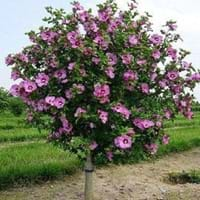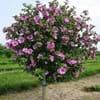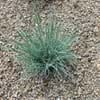Life Span
Annual and Perennial
Perennial
Type
Deciduous Shrub, Ornamental Plants, Shrub
Bulb or Corm or Tuber
Origin
Not Available
Mediterranean, Turkey
Types
Diana, Oiseau Bleu, Hamabo, Red Heart, Notwoodone, William R. Smith, Meehani, Woodbridge
Not available
Number of Varieties
Not Available
Habitat
gardens
Lawn, meadows, Sunny Edge, Woodland Garden
USDA Hardiness Zone
5-9
6-9
Sunset Zone
2a, 2b, 3a, 3b, 4, 5, 6, 7, 8, 9, 10, 11, 12, 13, 14, 15, 16, 17, 18, 19, 20, 21, 22, 23, 24
21,22
Habit
Upright/Erect
Clump-Forming
Flower Color
Dark Pink, Light Pink, Pink
Fuchsia, Rose
Flower Color Modifier
Bicolor
Bicolor
Fruit Color
Non Fruiting Plant
Not Available
Leaf Color in Spring
Green, Light Green, Yellow
Green
Leaf Color in Summer
Light Green
Light Green
Leaf Color in Fall
Yellow, Green, Pink
Several shades of Green
Leaf Color in Winter
Gold, Tan
Light Green
Leaf Shape
Ovate and toothed
Long Broad
Plant Season
Spring, Summer, Fall, Winter
Spring, Fall
Sunlight
Full Sun, Partial Sun
Full Sun, Partial Sun
Growth Rate
Medium
Medium
The pH of Soil
Neutral
Acidic, Neutral
Soil Drainage
Well drained
Well drained
Bloom Time
Early Summer, Summer, Late Summer, Early Fall, Fall, Indeterminate
Late Summer, Early Fall
Tolerances
Drought, Variety of soil types
Drought
Where to Plant?
Ground, Pot
Container, Ground, Pot
How to Plant?
Stem Cutting, Tip cutting, Vegetative Reproduction
Corms or bulbs, Seedlings
Plant Maintenance
Medium
Low
Watering Requirements
It cannot sustain wet-feet, Keep the Soil well drained, Requires watering in the growing season, Water Deeply, Water frequently while growing, Water more in summer, Water when soil is dry
Do Not over Water, Keep the ground moist but not water-logged
In Summer
Lots of watering
Lots of watering
In Spring
Moderate
Moderate
In Winter
Average Water
Average Water
Soil pH
Neutral
Acidic, Neutral
Soil Drainage Capacity
Well drained
Well drained
Sun Exposure
Full Sun, Partial Sun
Full Sun, Partial Sun
Pruning
A hard prune may be necessary if the plant becomes woody, Cut leaves after fall, Cut or pinch the stems, Pinch or prune as they grow to promote branching and bushiness, Prune for shortening long shoots, Prune in early summer, Remove deadheads
Cut or pinch the stems, Remove damaged leaves, Remove dead flowers, Remove dead leaves
Fertilizers
Apply 10-10-10 amount, Balanced liquid fertilizer, Do not fertilize new plants until at least a month, Use a low phosphate fertilizer to improve the quality of the blooms
All-Purpose Liquid Fertilizer, fertilize in summer
Pests and Diseases
Aphids, Mealybugs, Red spider mite, Scale, Thripes, Whiteflies
Slugs
Plant Tolerance
Drought, Variety of soil types
Drought
Flower Petal Number
Single
Single
Foliage Texture
Medium
Coarse
Foliage Sheen
Glossy
Not Available
Attracts
Bees, Butterflies, Hummingbirds
Bees, Butterflies
Allergy
no allergic reactions
poisonous if ingested, Toxic if not prepared properly
Aesthetic Uses
Beautification, Borders, Landscape Designing
Beautification, Cottage Garden, Showy Purposes
Beauty Benefits
Hair Conditioner, Not Available, Prevents greying of hair, Prevents Premature Baldness, Promotes Healthy Hair, Promotes healthy skin, Speed hair growth
Removes pimples
Environmental Uses
Air purification
Air purification
Medicinal Uses
anti-inflammatory, Diuretic, Hair Loss, High blood pressure, Vitamin C
Arthritis, Gout, Itching
Part of Plant Used
Flowers, Leaf Stalks, Leaves
Bulbs, Flowers, Seeds
Other Uses
Showy Purposes, Used as Ornamental plant, Used for fragrance
Used as Ornamental plant, Used for its medicinal properties
Used As Indoor Plant
No
No
Used As Outdoor Plant
Yes
Yes
Garden Design
Container, Foundation, Houseplant, Mixed Border, Tropical
Alpine, Container, Mixed Border, Rock Garden / Wall
Botanical Name
Hibiscus syriacus
Colchicum autumnale
Common Name
Syrian ketmia, Rose mallow, St Joseph's rod, Shrub Althea
Autumn Crocus, meadow saffron, naked lady
In Hindi
Rose of Sharon Hibiscus
शरद ऋतु का पौधा
In German
Rose von Sharon Hibiscus
Herbstzeitlose
In French
Rose de Sharon Hibiscus
colchique d'automne
In Spanish
Rosa de Siria Hibiscus
cólquico
In Greek
Rose της Sharon Hibiscus
φθινόπωρο κρόκος
In Portuguese
Rosa de Sharon Hibiscus
aftomn gema
In Polish
Rose of Sharon Hibiscus
aftomn żółtka
In Latin
Rose of Sharon Hibiscus
aftomn vitellus
Phylum
Magnoliophyta
Magnoliophyta
Class
Magnoliopsida
Liliopsida
Family
Malvaceae
Liliaceae
Clade
Angiosperms, Eudicots, Rosids
Angiosperms, Monocots
Subfamily
Malvoideae
Not Available
Number of Species
Not Available
Importance of Rose of Sharon Hibiscus and Autumn Crocus
Want to have the most appropriate plant for your garden? You might want to know the importance of Rose of Sharon Hibiscus and Autumn Crocus. Basically, these two plants vary in many aspects. Compare Rose of Sharon Hibiscus and Autumn Crocus as they differ in many characteristics such as their life, care, benefits, facts, etc. Every gardener must at least have the slightest clue about the plants he wants to plant in his garden. Compare their benefits, which differ in many ways like facts and uses. The medicinal use of Rose of Sharon Hibiscus is anti-inflammatory, Diuretic, Hair Loss, High blood pressure and Vitamin C whereas of Autumn Crocus is Arthritis, Gout and Itching. Rose of Sharon Hibiscus has beauty benefits as follows: Hair Conditioner, Not Available, Prevents greying of hair, Prevents Premature Baldness, Promotes Healthy Hair, Promotes healthy skin and Speed hair growth while Autumn Crocus has beauty benefits as follows: Hair Conditioner, Not Available, Prevents greying of hair, Prevents Premature Baldness, Promotes Healthy Hair, Promotes healthy skin and Speed hair growth.
Compare Facts of Rose of Sharon Hibiscus vs Autumn Crocus
How to choose the best garden plant for your garden depending upon its facts? Here garden plant comparison will help you to solve this query. Compare the facts of Rose of Sharon Hibiscus vs Autumn Crocus and know which one to choose. As garden plants have benefits and other uses, allergy is also a major drawback of plants for some people. Allergic reactions of Rose of Sharon Hibiscus are no allergic reactions whereas of Autumn Crocus have poisonous if ingested and Toxic if not prepared properly respectively. Having a fruit bearing plant in your garden can be a plus point of your garden. Rose of Sharon Hibiscus has no showy fruits and Autumn Crocus has no showy fruits. Also Rose of Sharon Hibiscus is not flowering and Autumn Crocus is not flowering . You can compare Rose of Sharon Hibiscus and Autumn Crocus facts and facts of other plants too.





